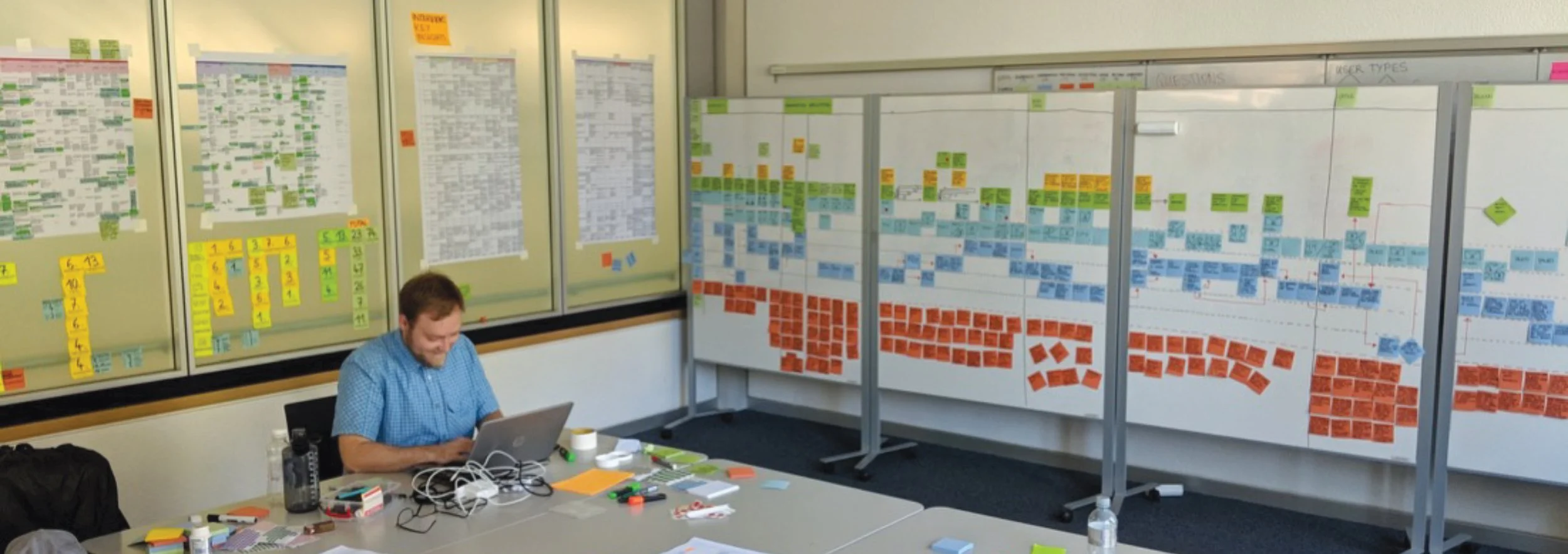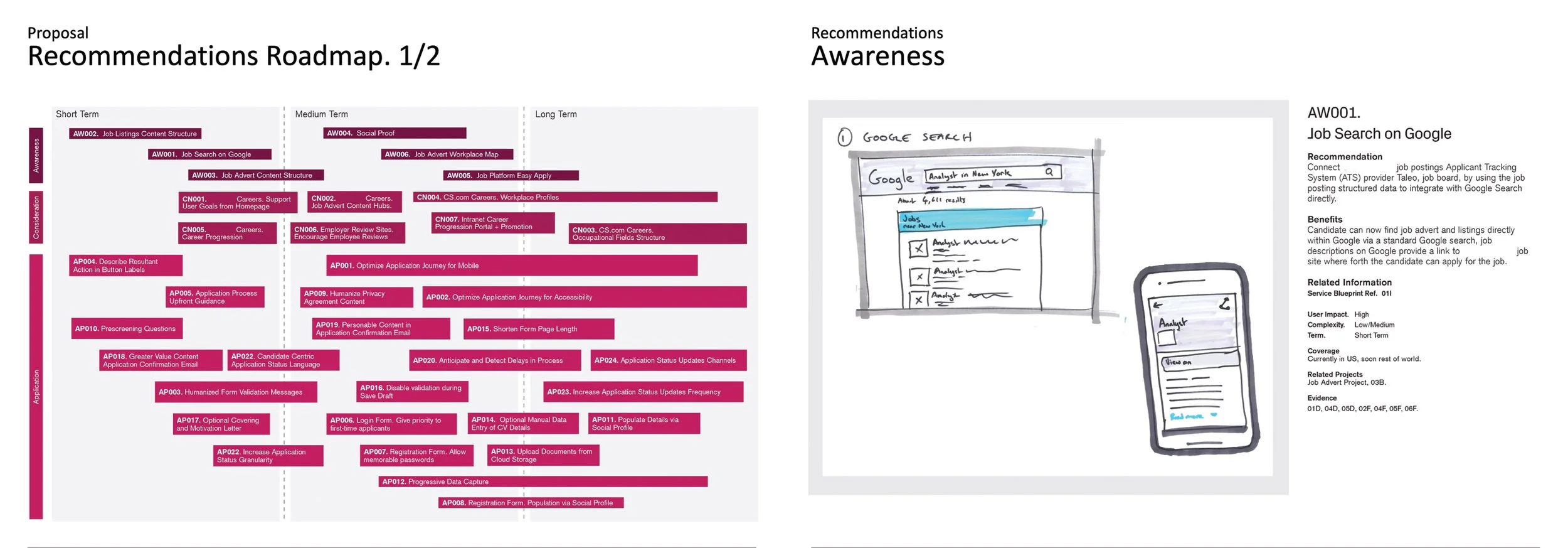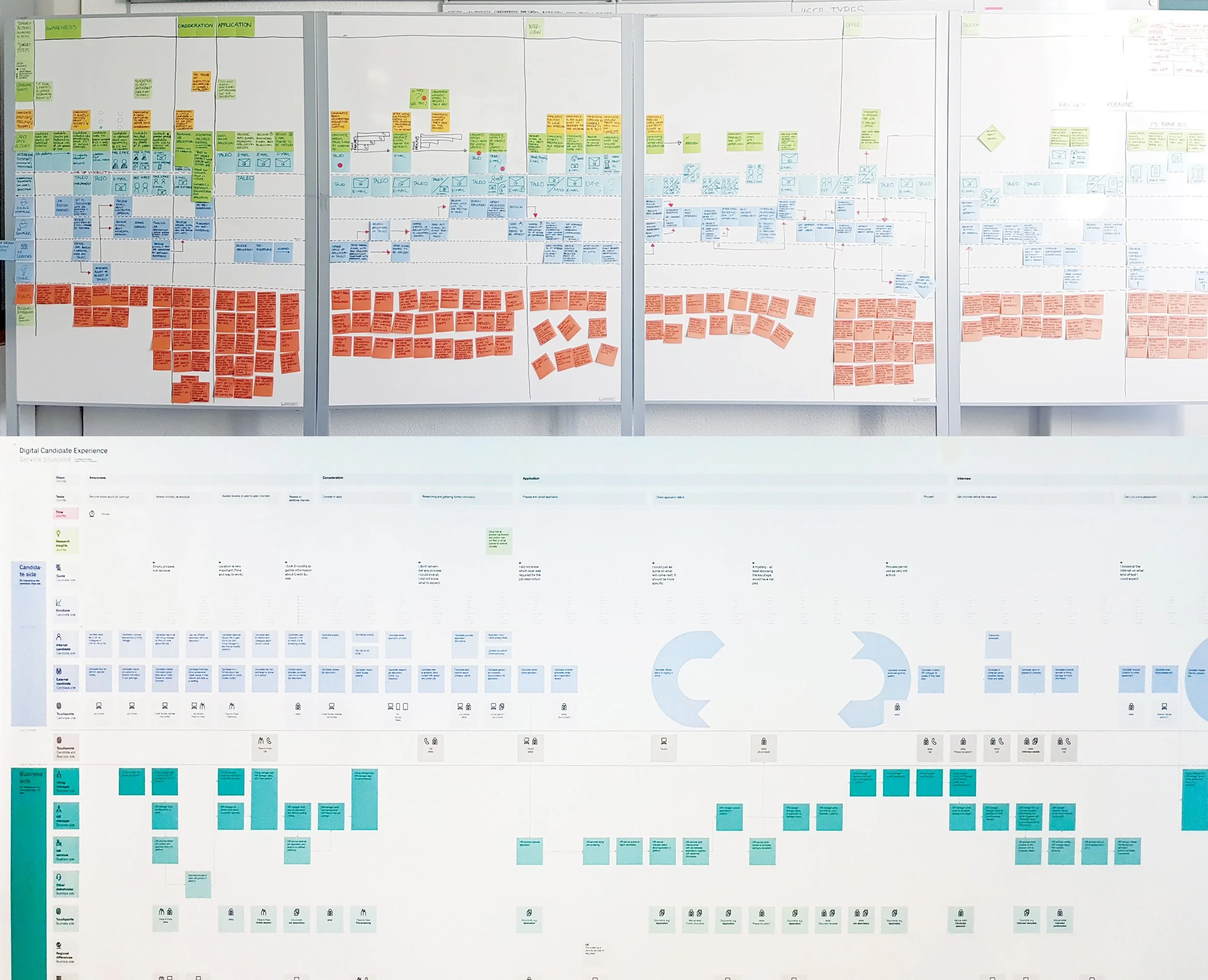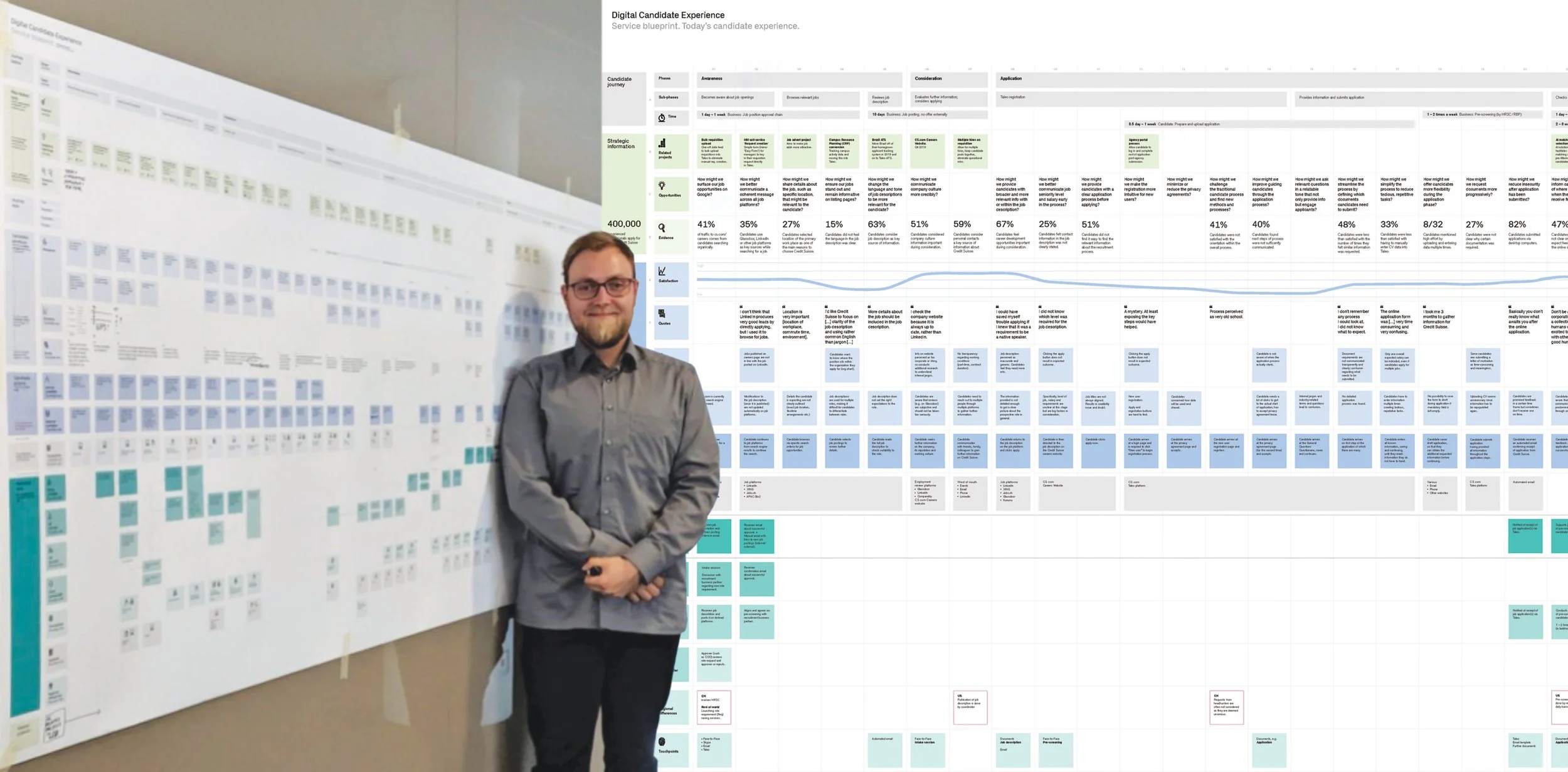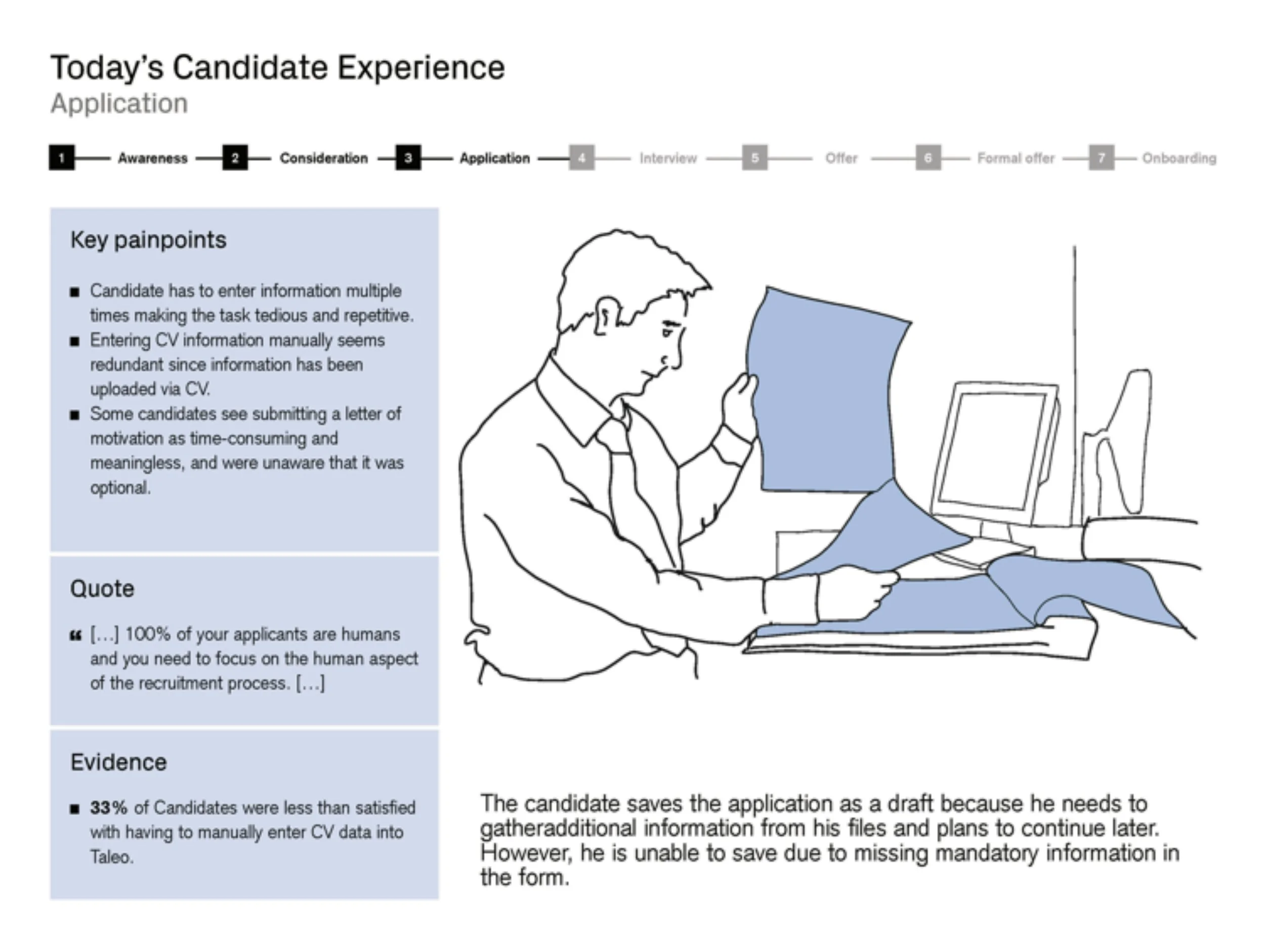Redefining candidate experience at Switzerland’s second-largest bank
“At a 200-year-old bank with 400,000+ job applicants per year, we rebuilt hiring workflows to restore fairness and internal trust.”
This project started as a request to improve candidate experience.
It became a story about changing how departments collaborate, listen, and deliver.
THE CHALLENGE
The hiring journey was broken.
No one fully owned it.
Stakeholders weren’t aligned
Internal applicants feared bias
Feedback loops were unclear
Tools and handoffs were inconsistent
Candidate drop-off rates were climbing
There was no single map, no shared language, no source of truth.
We stepped in to co-create one — from the inside out.
THE SHIFT WE MADE
From siloes and assumptions to shared understanding and action.
Here is how we led the transformation
Built a cross-functional blueprint with HR, Legal, and Hiring Managers
Visualized the current journey and made the friction visible
Reframed “UX fixes” as systemic shifts: clarity, confidence, fairness
Facilitated alignment workshops across three levels of the org
Trained stakeholders to co-lead research and synthesize findings
💬 “You can’t prototype fairness without your stakeholders in the room.”
THE DECISIONS THAT MATTERED
We weren’t just building. We were choosing.
Removed a mobile-first test after 2× drop-off on iOS
Rewrote job templates based on candidate comprehension tests
Delayed launch to align messaging with legal + compliance → prevented rework
Killed a proposed chatbot after 6/7 managers didn’t understand its use
These decisions weren’t random. They were based on data, feedback, and strategic listening.
WHAT WE SHOWED
Screenshots. Snapshots. Signals of change.
Blueprint of the hiring journey with annotated handoffs
Interview quotes mapped across emotional highs/lows
Before/after of job ads showing structure + clarity
Service storyboard used in onboarding and training
Results:
"No feedback" candidate complaints dropped from 44% → 18%
Candidate NPS increased by +12
Internal blueprint is now used across 4 departments
MY ROLE AND HOW I WORKED
Design Lead - but here’s what I really did
Coached HR in running and analyzing interviews
Hosted live mapping and feedback reviews with execs
Synthesized 54 insights into a visual roadmap
Made findings public and trackable via Notion
Mentored team members to take ownership of next steps
This wasn’t about driving deliverables — it was about designing collaboration.
WHAT I LEARNED AND FINAL REFLECTION
Real change happens when people see the system they’re part of — and feel invited to improve it.
“You can’t fix a broken journey with better screens.”
“If it’s not visible, it won’t be owned.”
“Adoption begins in the map room.”
This case study is a blueprint for what I believe design leadership is: Facilitating change, not forcing it. Designing with, not for.
“We started by trying to improve candidate experience. We ended by reshaping how teams across the company work together.”
Behind the scenes
War room
A dedicated space to display and analyse all interviews, identify patterns and insights, and review the first version of the blueprint
Blueprint iterations
Evolving from agile mapping with Post-its—allowing flexibility and learning—to the first digital version for better legibility and credibility.
Roadmap
A visual roadmap organises identified recommendations into short-, mid-, and long-term phases. A separate deep-dive page detailing a recommendation’s context and implementation was provided in the appendix.
Finalised blueprint as a vertical campfire
Measuring 1m x 3.5m, the map displayed all research, insights, initiatives, and gaps, becoming a strategic working tool.
Competitor benchmark report
The goal was to understand the competitors in the market and draw inspiration from elements of their journey that were better designed for the application. A competitor benchmark report was created, accompanied by a "to-be" storyboard, highlighting potential opportunities to better engage with future applicants.
As-is storyboard
Bringing issues to life by visualising key pain points through research quotes, supporting desk research evidence, and scene descriptions.
Online survey
A large quantitative online survey was created and analyzed, complementing 45 qualitative interviews. This approach helped establish data savviness and confirmed or refuted signals identified in the initial interviews.
Co-creation
Regular stakeholder co-creation sessions enabled open collaboration and ensured the blueprint evolved as a single source of truth.
Interviews
A variety of interviews were conducted with the support of a local agency to expedite the process. In total, 45 individuals were interviewed, and 5 user segments were identified.

